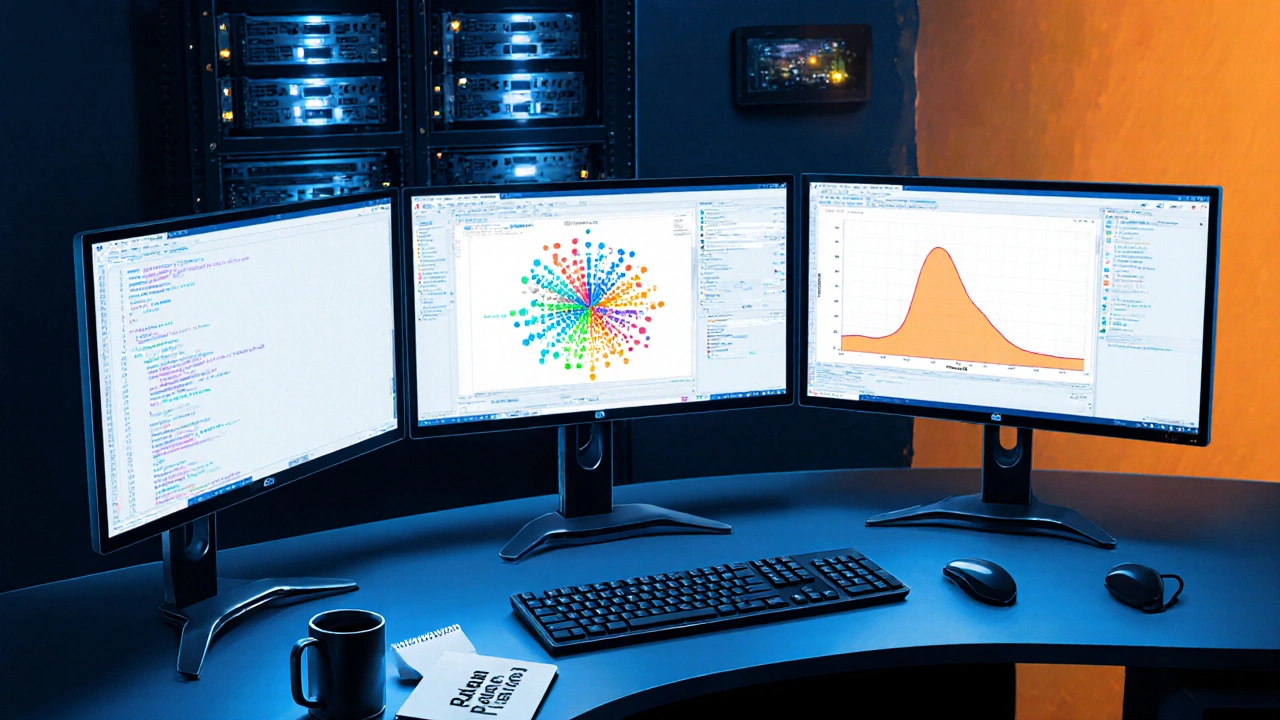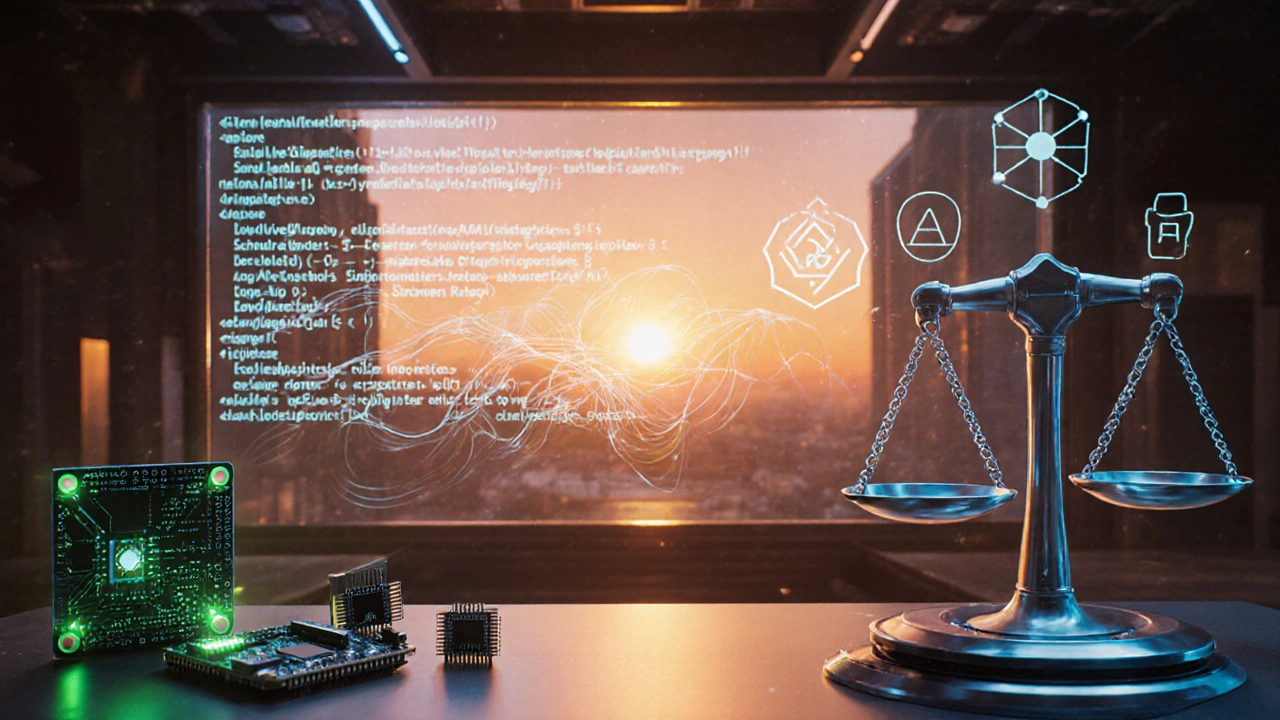AI Framework Selection Tool
Select Your Project Requirements
Answer these questions to find the most suitable AI framework for your project
Recommended Framework
Imagine a future where every product you touch-from smart assistants to autonomous drones-talks the language of machines. That language isn’t just data; it’s code. If you can write it, you can shape that future. That’s why coding for AI has become the new superpower for tech visionaries.
What “coding for AI” really means
AI programming is the practice of writing software that creates, trains, or runs artificial intelligence models. It goes beyond traditional scripting; you’re teaching computers to recognise patterns, make decisions, and even generate new content. Whether you’re building a recommendation engine, a computer‑vision system, or a conversational bot, the core activity is the same: transform mathematical concepts into executable code.
Why every tech visionary should learn AI coding
Visionary leaders don’t just follow trends-they set them. Knowing how to code for AI gives you three strategic advantages. First, it lets you prototype ideas at lightning speed, turning vague concepts into working demos that can attract investors or partners. Second, it equips you with the analytical mindset needed to evaluate AI solutions critically, so you avoid hype traps. Third, it opens doors to high‑impact careers, from chief AI officer to AI‑focused startup founder, where demand outpaces supply by a wide margin.
Core building blocks: languages, frameworks, and tools
Over the past decade a handful of languages and libraries have become the backbone of AI development. Below is a quick rundown of the most influential ones.
- Python is the de‑facto language for AI because of its readable syntax and massive ecosystem of libraries. Libraries such as NumPy and Pandas handle data manipulation, while Sci‑Kit Learn offers classic machine‑learning algorithms.
- TensorFlow - Google’s open‑source framework that excels at large‑scale distributed training and production deployment.
- PyTorch - Preferred by researchers for its dynamic computation graph and intuitive debugging experience.
- Neural networks - The model architecture that powers deep learning, ranging from simple feed‑forward nets to complex transformers.
- Model training - The iterative process of feeding data to a network, adjusting weights, and evaluating performance.
- GitHub Copilot - An AI‑powered code assistant that can suggest snippets, accelerate data‑pipeline creation, and even generate boiler‑plate model code.
- MLOps - The discipline that blends DevOps practices with machine‑learning pipelines to ensure reproducibility and scalability.
- Data preprocessing - Cleaning, normalising, and augmenting raw data to make it suitable for model consumption.
- Cloud GPUs - On‑demand graphics processors from providers like AWS, Azure, and GCP that cut training time from weeks to hours.
- Prompt engineering - The art of crafting inputs for large language models to get reliable, domain‑specific outputs.

Comparison of AI programming languages and frameworks
| Language / Framework | Primary Use‑Case | Ecosystem Strength | Performance (GPU‑Optimised) | Learning Curve |
|---|---|---|---|---|
| Python + TensorFlow | Production‑grade deep learning | Large (Google, community tutorials) | High - native GPU kernels | Medium - requires understanding of graphs |
| Python + PyTorch | Research & prototyping | Growing fast (Facebook, academia) | High - dynamic kernels | Low - intuitive imperative style |
| JavaScript (TensorFlow.js) | In‑browser AI, lightweight inference | Moderate (npm packages) | Medium - WebGL backend | Low - JavaScript familiarity enough |
| R + caret | Statistical modelling, small‑scale ML | Specialised (stats community) | Low - CPU‑bound | Medium - stats background helpful |
Roadmap: From zero to AI‑savvy coder
- Master Python basics. Focus on variables, control flow, functions, and object‑oriented concepts. Projects like a simple web scraper solidify the syntax.
- Brush up on math fundamentals. Linear algebra (vectors, matrices), probability, and calculus underpin most algorithms. Khan Academy or 3Blue1Brown videos are great free resources.
- Learn core ML concepts. Study supervised vs unsupervised learning, loss functions, overfitting, and evaluation metrics such as accuracy and F1‑score.
- Pick a framework. Start with PyTorch for its approachable style, follow the official 60‑minute tutorial, then replicate a classic image‑classification model (e.g., CIFAR‑10).
- Build end‑to‑end projects. Examples: sentiment‑analysis API, facial‑recognition attendance system, or a recommendation engine using collaborative filtering.
- Explore MLOps basics. Containerise your model with Docker, set up CI/CD pipelines on GitHub Actions, and log experiments with MLflow.
- Leverage AI assistants. Use GitHub Copilot or Tabnine to speed up boilerplate code, but always review suggestions to avoid hidden bugs.
- Stay current. Follow arXiv daily, subscribe to newsletters like “Import AI”, and join communities on Reddit r/MachineLearning and Slack channels.

Common pitfalls and how to avoid them
- Skipping data hygiene. Garbage in, garbage out. Always visualise distributions and handle missing values before training.
- Over‑fitting the model. Simple solutions: use dropout, early stopping, or gather more data instead of just adding layers.
- Choosing the wrong metric. Accuracy works for balanced classes, but for imbalanced data you need precision, recall, or AUC‑ROC.
- Neglecting reproducibility. Fix random seeds, log library versions, and store datasets in version‑controlled storage.
- Relying solely on AI code assistants. They can introduce subtle logical errors; treat suggestions as drafts, not final code.
Future trends: What to watch in AI coding
AI‑enabled development is still in its infancy, and several trends will shape the next wave.
- Generative AI for code. Models like OpenAI Codex and DeepMind AlphaCode will write larger portions of pipelines, pushing developers toward higher‑level design and AI‑system orchestration.
- Low‑code/no‑code AI platforms. Tools such as Google Vertex AI and Microsoft Power Platform let business users assemble models visually, but developers will be needed to customise and optimise the underlying logic.
- Edge AI deployment. With advances in TinyML and on‑device accelerators, code will increasingly target phones, sensors, and microcontrollers, demanding knowledge of optimisation tricks.
- Responsible AI tooling. Frameworks that embed fairness checks, explainability, and privacy safeguards will become standard parts of any AI codebase.
- Hybrid quantum‑classical pipelines. Early research shows quantum‑enhanced optimisation can accelerate certain ML tasks, hinting at a future where AI programmers need to understand quantum SDKs.
Do I need a computer‑science degree to start coding for AI?
No. While a formal degree helps, most AI engineers are self‑taught through online courses, open‑source projects, and hands‑on experiments. Focus on Python, math fundamentals, and real‑world projects.
Which language should I learn first for AI development?
Python is the safest bet. Its libraries cover everything from data wrangling to deep learning, and the community provides abundant tutorials and support.
How much time does it take to become proficient enough to build a model?
If you study consistently-about 10‑15 hours a week-you can build a basic image‑classifier in 2‑3 months. More complex systems, like NLP chatbots, may need 6‑12 months of focused practice.
What hardware do I need for training deep models?
A modern laptop with an NVIDIA GPU (e.g., RTX 3060) is enough for learning and small projects. For larger experiments, rent cloud GPUs from AWS, Azure, or Google Cloud.
Is it worth learning both TensorFlow and PyTorch?
If you can master one, you’ll pick up the other faster. PyTorch is easier for research, while TensorFlow shines in production. Knowing both widens job prospects.

